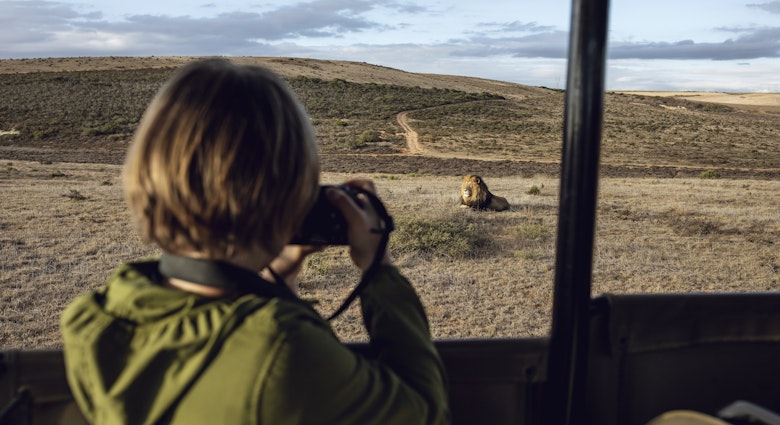Chimpanzees may get much less hype in the travel media than endangered mountain gorillas, but tracking our closest relative through the African jungle is in fact one of the world's most thrilling wildlife encounters (and it costs a fraction of visiting our larger cousins).
Although there are around 300,000 chimpanzees left in the equatorial forests of Africa, observing them in their natural habitat is a rare treat. One of the best places to do so is Kibale Forest National Park in Uganda as it's home to five habituated groups that are within easy walking distance.
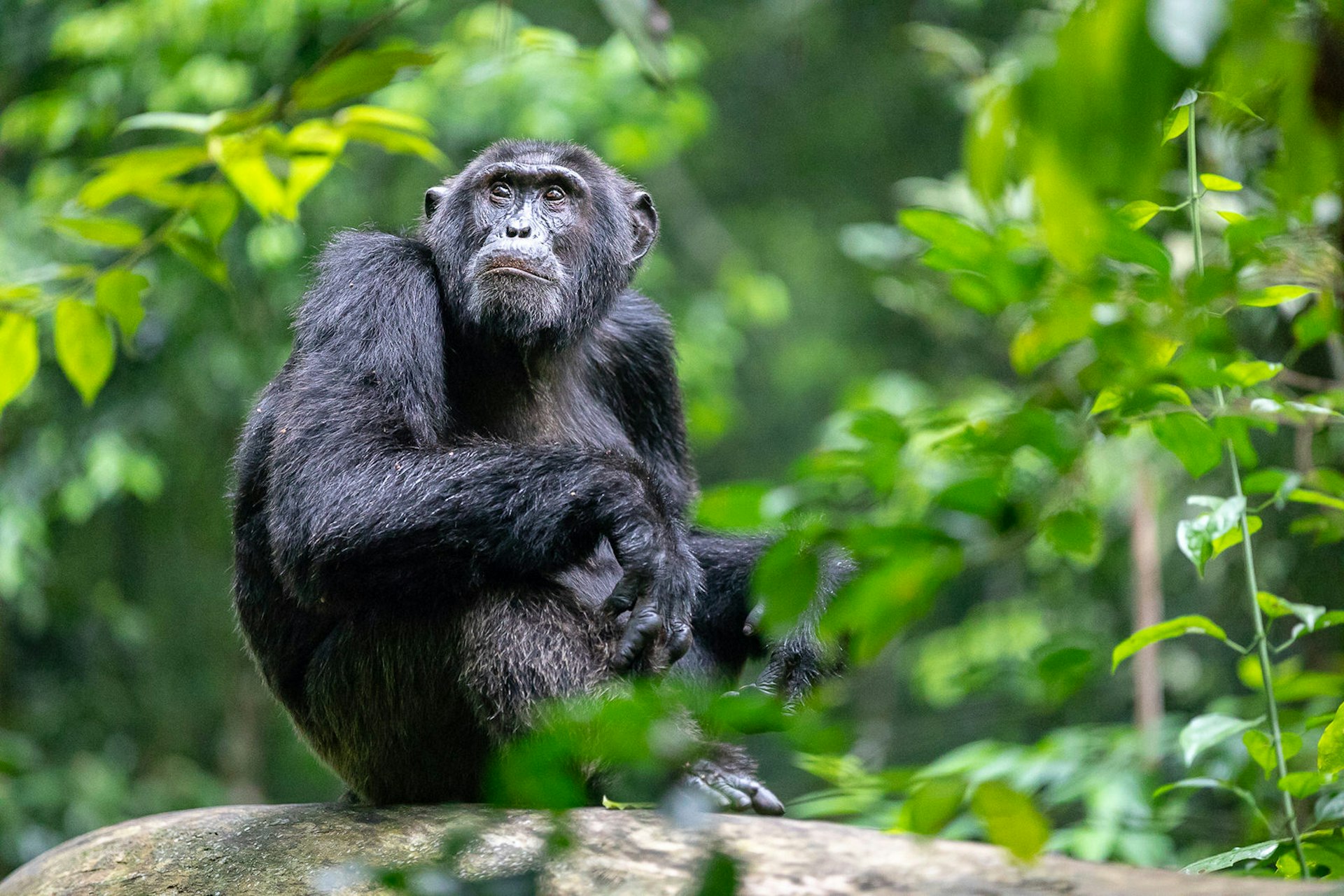
Africa’s chimpanzees
Chimpanzees live in communities of up to 150 members, which are divided into smaller subgroups and led by an alpha male. They’ll typically spend much of their day high up in the treetops, grooming, sleeping, and feeding on fruit, leaves and bark. However, it's when they descend from the canopy that you’ll have your best chance of getting close to them.
Today we know that chimpanzees are humans’ closest genetic relatives – sharing around 98% of our DNA – but it was the celebrated primatologist Dr. Jane Goodall who first observed their astonishing human-like behaviour. In the 1960s Dr. Goodall moved in with a community of chimps in Tanazania’s Gombe National Park, where she was able to prove that chimpanzees kill and eat small mammals, and can make and use tools, ideas that were completely unknown at the time.
By spending time with the chimps she eventually taught them to accept her – a process known as habituation which is not only fantastic for scientists, but also opens up the opportunity for ordinary visitors to get almost within touching distance of these incredible creatures.
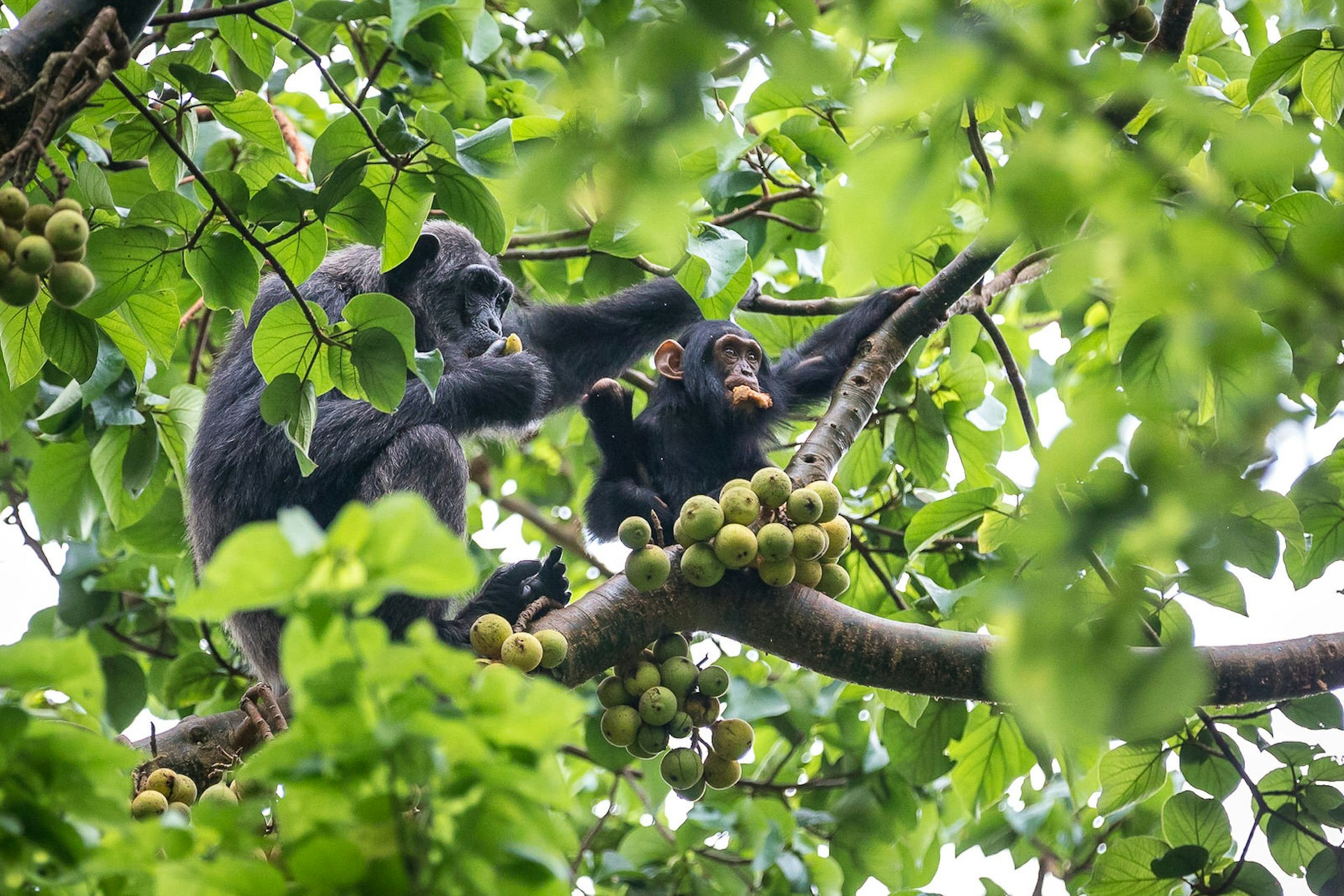
The chimpanzees of Kibale Forest National Park
Kibale Forest in Uganda is home to around 1500 chimpanzees living in 13 communities. Of these, various groups have been successfully habituated; some for scientific study and others, such as the Kanyanchu group, are used for tracking.
The Kanyanchu group, made up of more than 120 individuals, is led by an alpha male named Totti (after an Italian footballer) who took the top job in 2016 after a two-year battle with the previous alpha, Magezi. Visits to the group take place in the mornings and afternoons and typically last 3-4 hours with up to one hour spent with the chimps. The cost of the tracking permit is US$150 per person, a fraction of the US$750 and US$1500 price tags for gorilla permits at Uganda's Bwindi Impenetrable National Park and Rwanda's Volcanoes National Park respectively.
If an hour isn’t enough for you, then the park also offers a habituation experience, where you’ll spend a full day (US$220) following one of two communities currently undergoing the two-year habituation process. You’ll need to be prepared for a fair bit of brisk walking – chimps can move fast – but it will be worth it for the rewards of a more intimate encounter.
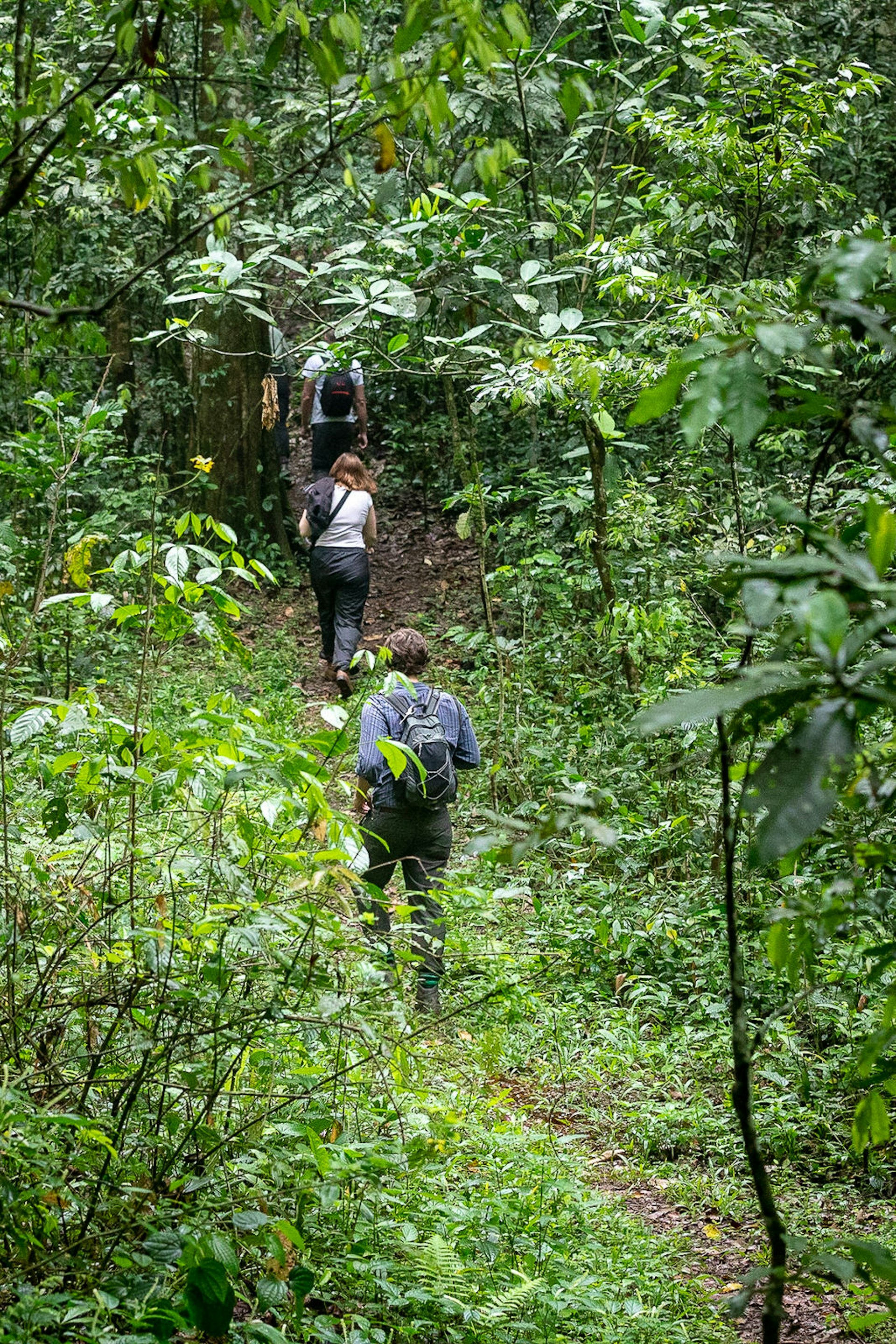
What to expect from your chimpanzee experience
Most visitors opt for the half-day, which should provide you with plenty of time to find the group and enjoy a thrilling hour in their company. The adventure starts with a briefing, during which you’ll learn a little about the animals you’re about to see, as well as being given some dos and don’ts. Top of the list: avoid getting too close. Not only for your own safety, but also for theirs as our colds, viruses and diseases can easily spread to them due to shared DNA. It's also not wise to imitate their calls. While it might seem fun to mimic them, if you’re not careful you might accidentally end up recreating a battle cry and bring 120 angry chimpanzees down upon you. Once you’ve been briefed, you’re separated into groups of up to seven, each accompanied by a guide, who is armed in case of emergencies. And then it’s time to head into the forest.
Pushing through the tangled undergrowth, ducking under low branches and watching your step for twisted roots, you’ll hike in the direction of where the animals were last seen, all the time listening for their cries in the trees above. With a bit of luck you’ll soon hear them: that harsh, high-pitched screeching that rises to a crescendo and then fades away again as the family members call to one another. It’s an eerie, thrilling sound, and one that you know means you’re about to meet the stars of the show.
As you follow the direction of the cacophony, you should soon find one of the family's sub-groups. They may be high up in the treetops, feasting on figs, grooming or playing. But if you’re lucky, some will have come down to the ground, and that’s when the real magic happens.
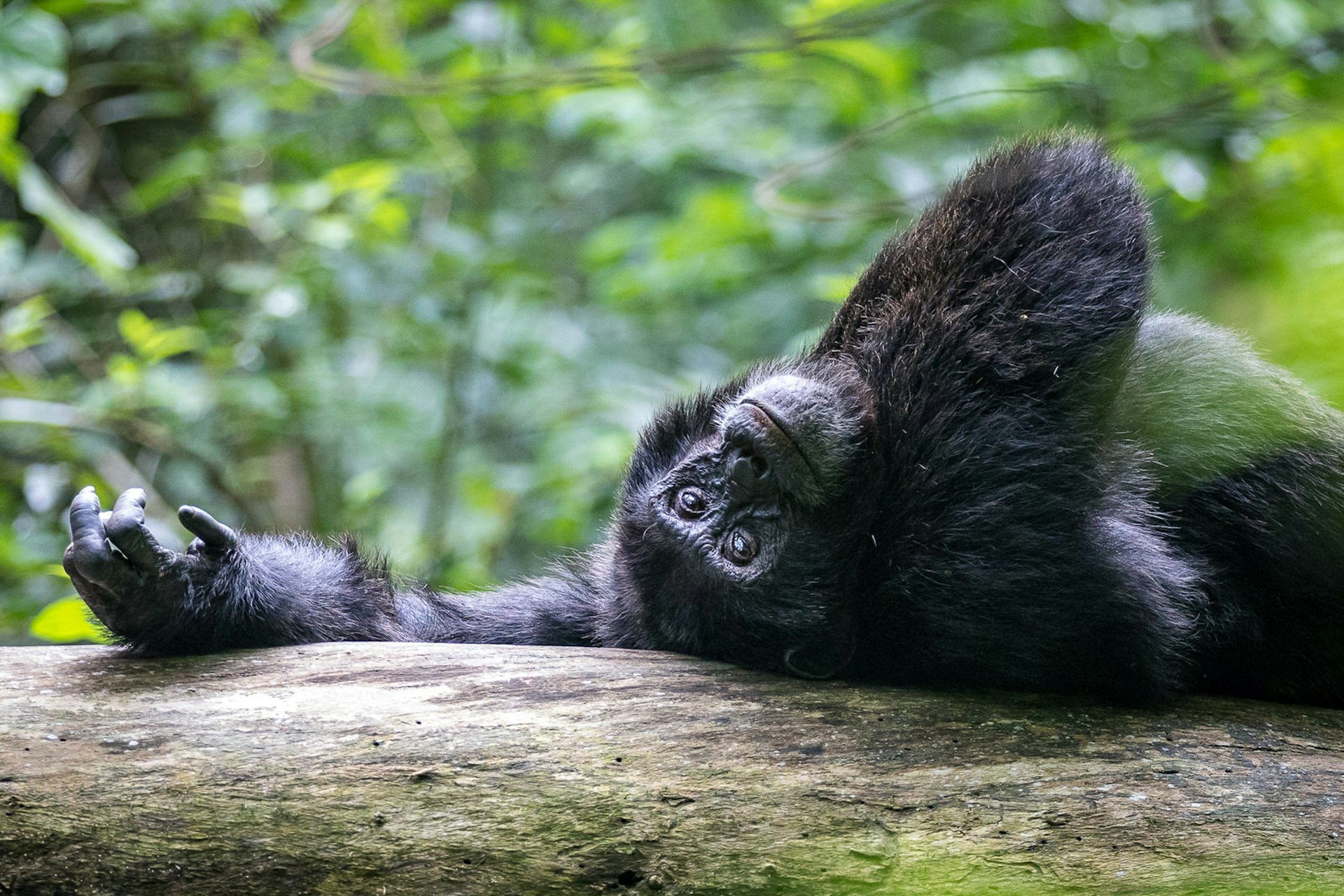
Face to face with chimpanzees
No matter how prepared you are, nothing beats that first, up-close, chimpanzee encounter. That intense buzz of being no more than a few feet away from these completely wild creatures. The thrill of seeing how intelligent they are, with their poses, expressions and interactions that could be almost human. The way they look right at you with their bright eyes, and even pose for your camera, you may wonder if they’re enjoying the interaction even more than you are.
The gorillas may be Uganda’s star attraction, but coming face-to-face with a wild chimpanzee is every bit as breathlessly exhilarating. In fact, this experience is arguably better, because the terrain is much easier, the forest less dense, the chimpanzees easier to find, and the price significantly cheaper. All good reasons why you might want to consider putting chimps right at the top of your must-see list.
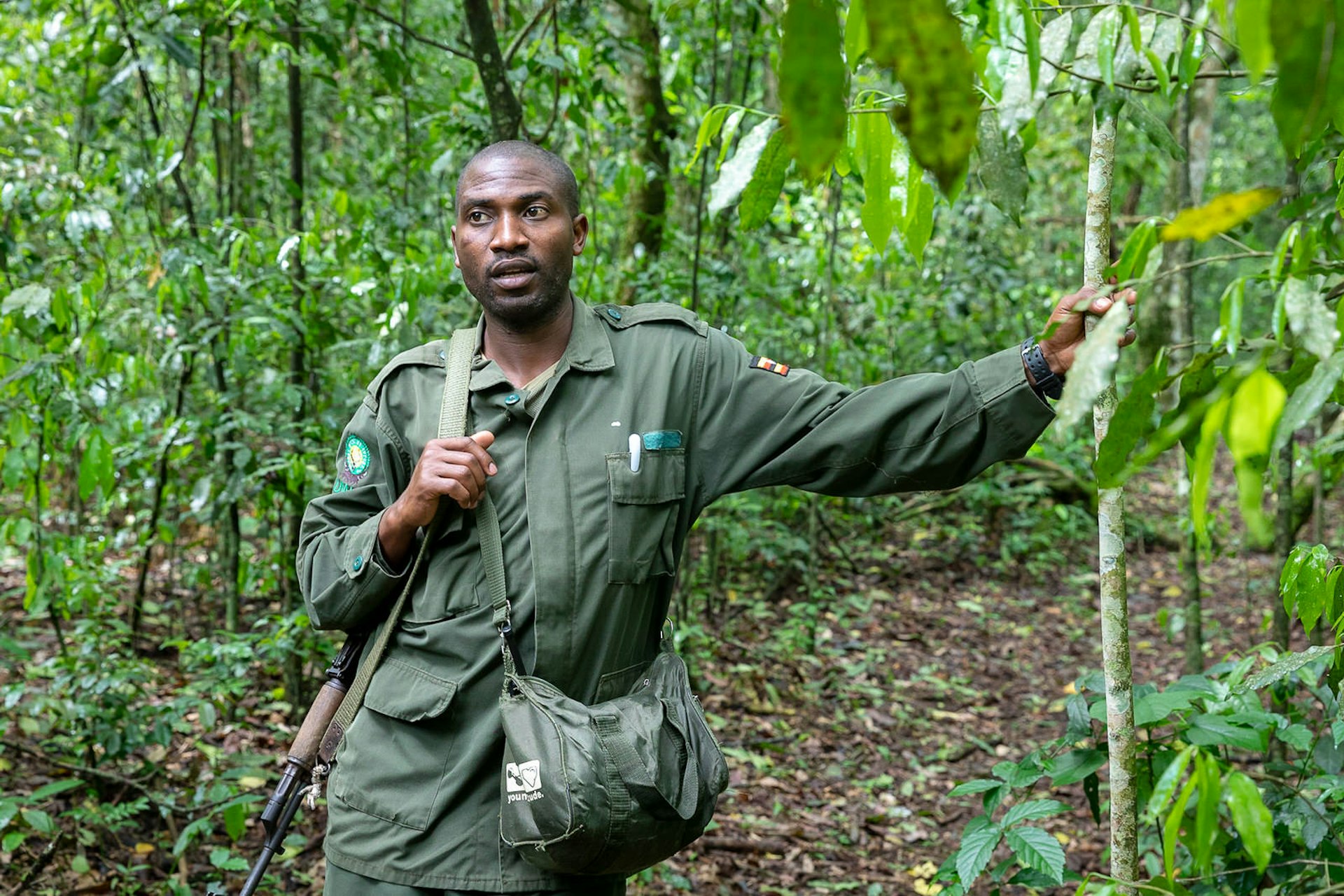
The unsung heroes of Kibale
Like any African wildlife experience, chimpanzee tracking is only as good as its guides. Fortunately, the Uganda Wildlife Authority rangers who run the show are among the best of the best. Working in wildlife tourism in Uganda is a highly-prized job, and for the lucky few it offers a chance to spend every day out in nature, helping to protect the country’s precious ecosystem and sharing their passion with other wildlife-lovers. Little wonder that there are 50 applicants for every job, and that the selection process is tough, involving a written exam, oral interview and fitness test. Rangers must be truly knowledgeable about conservation, have great people skills and speak excellent English – which makes them among the most dedicated and interesting people you will meet anywhere on your travels.
Take 34-year-old Africano, for example. He grew up in Kibale forest, the son of poor parents who scratched a living from subsistence farming. When the forest was made a national park in 1993, everyone living there was forcibly evicted. For a long time, young Africano was furious with the government and with life, until he realised that if he followed his passion, he could turn the situation to his advantage. He studied hard at school, learned about tourism and wildlife management, and got a job as a ranger in the park. Now he’s not only able to help protect the forest he loves, he’s supporting his family in the process.
Kibale is not the only place to see chimpanzees in Uganda; there are also opportunities around Queen Elizabeth National Park and Murchison Falls National Park and in some smaller forest reserves. But thanks to Kibale’s large population the chance of seeing them is said to be around 90%, which is why it’s become known as Uganda’s premier chimpanzee tracking destination.
https://shop.lonelyplanet.com/products/east-africa-ebook-11


